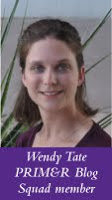In my introductory blog, I expressed that one of the reasons I love coming to PRIM&R events is the opportunity to network. This year is no different. The people at AER are friendly, intelligent, funny, and willing to discuss and partner with you. I take every opportunity at the conference to meet people from all areas of human subjects protections. Because of this, I meet a lot of really neat people. Here is a taste of the people I have had the privilege to meet in the past three days: IRB chairs, IRB members, clergy, attorneys, PRIM&R members, CIP-certified folks, IRB administrators, OHRP representatives, institutional officials, community members, non-scientists, new IRB staff, first-time attendees, PRIM&R board members, vendors, and AAHRPP representatives. Everyone has something to offer. Even better, only a few have been mildly scared that I might blog about them.
PRIM&R offers excellent opportunities to network. For those 30 years of age or younger, there was the young professionals reception on Monday night. Other after-hours events included the pre-conference reception and the Speed Mentoring event. For PRIM&R members, there was a reception last night. There are also opportunities to network while walking the vendor exhibits and poster sessions, and eating with new people at breakfast or lunch. There have even been special dining sessions for further networking, such as the first-time attendee breakfast, the CIP® breakfast, and the CITI lunch.
And for all you interested in some numbers: This year’s conference has 300 more attendees than last year, and they are from all 50 states and 30 countries. Additionally, David Borasky, chair of the PRIM&R Membership Committee, reported that PRIM&R now has 3,200 members.
Beyond the opportunities to network, sessions stressed the need for creating and maintaining ongoing networks. Starting with my pre-conference program, a culture of networking became an ever-present component of an effective program. No one wants or needs to re-invent the wheel. This was not only discussed, but practiced at the Effective Practices for Reducing Administrative Burden in Human Subject Research workshop. The Federal Demonstration Partnership is setting the bar for collaborative effort in streamlining human protections with a 120-university partnership. Better ideas come from building on other’s work and putting ideas together, rather than trying to come up with a solution alone. After the session, several attendees met with the panelists and exchanged contact information.
The need for networking again was a theme in both the keynote talk by author Rebecca Skloot, and in the panel Making Sense of Community: Responses to Tissue Research. Ms. Skloot and the panelists, Ms. Carletta Tilousi of the Havasupai tribe and Ms. Chris Hempel, all discussed the need for researchers and IRBs to network with the communities in which they are performing research. These true stories gave concrete evidence that networking is a required element in an effective research program that is ethical and protects human subjects. Their experiences are living proof that networking goes beyond one-on-one interactions. Networking includes groups of people from communities, universities, governments and regulatory agencies.
However, don’t just count on PRIM&R and the AER Conference to network for you. Go out, meet people, and collect business cards. Networking does not and should not end when we jump on the airplane home. When you get home, open conversations with other institutions, applicable government agencies, and your local community groups. Together, we will build a global network for protecting human subjects that is stronger than any one link.


No comments! Be the first commenter?